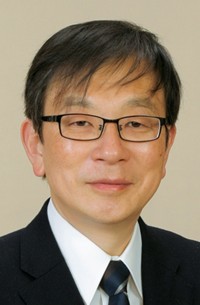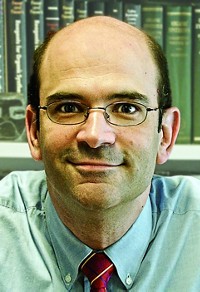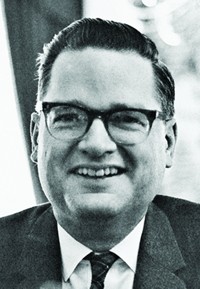Advertisement
Grab your lab coat. Let's get started
Welcome!
Welcome!
Create an account below to get 6 C&EN articles per month, receive newsletters and more - all free.
It seems this is your first time logging in online. Please enter the following information to continue.
As an ACS member you automatically get access to this site. All we need is few more details to create your reading experience.
Not you? Sign in with a different account.
Not you? Sign in with a different account.
ERROR 1
ERROR 1
ERROR 2
ERROR 2
ERROR 2
ERROR 2
ERROR 2
Password and Confirm password must match.
If you have an ACS member number, please enter it here so we can link this account to your membership. (optional)
ERROR 2
ACS values your privacy. By submitting your information, you are gaining access to C&EN and subscribing to our weekly newsletter. We use the information you provide to make your reading experience better, and we will never sell your data to third party members.
Synthesis
ACS Award for Creative Research & Applications of Iodine Chemistry
Recipients are honored for contributions of major significance to chemistry
by Susan R. Morrissey
February 9, 2009
| A version of this story appeared in
Volume 87, Issue 6
Sponsored by SQM S.A.
There may be no better way to cap a successful chemical research career than to be recognized by the American Chemical Society. This is the case for Gerald F. Koser, a professor emeritus at the University of Akron, in Ohio. Koser, 66, may no longer be an active researcher, but he has left a lasting mark on the field of iodine chemistry. The award honors his contributions to basic knowledge about the structure and reactivity of hypervalent iodine compounds and development of the valuable organic synthesis reagent hydroxy(tosyloxy)iodobenzene (HTIB).
“I am honored, humbled, and very happy to have been selected for the iodine award,” Koser says.
Koser spent much of his career studying the chemistry of HTIB and its derivatives and analogs. “Our first and latest publications (1976 and 2006, respectively) in this area span a period of 30 years,” he points out.
HTIB, widely known as Koser’s reagent, is now commercially available. It can be used in various reactions such as oxidative functionalizations, cyclizations, rearrangements, and fragmentations of organic substrates.
One example of an important use developed by the Koser lab for HTIB and its analogs is the preparation of iodonium salts. Most notably, the group made the first stable alkynyliodonium tosylates, which was reported in the early 1980s. Research in this area led to two patents concerning the preparation of aryliodonium salts.
“Starting with his first publication in the 1960s on the formation and reactivity of halonium ylides, he has performed an outstanding and creative research program related to iodine compounds and their applications,” says Viktor V. Zhdankin, chemistry professor at the University of Minnesota, Duluth. “It is difficult to overestimate the impact of his research on the field of organoiodine chemistry,” he adds.
Koser’s research, coupled with research reviews published in the 1980s, has led several colleagues to credit him for an unprecedented resurgence of hypervalent iodine chemistry over the past two decades.
“The rebirth of interest in hypervalent organoiodine (III) compounds can be directly traced to the original and fundamental discoveries of Koser,” according to Michael J. Taschner, chemistry professor at the University of Akron. “His name will be inexorably connected to the field of hypervalent iodine chemistry.”
But for Koser, his work in the classroom has been just as important as his work in the lab. “In addition to the enjoyment of working with students that teaching provided, I am convinced that the preparation of course lectures and the continuous review of basic ideas that this entails strongly inform and influence academic research,” he says. Although he is now retired, he continues to teach chemistry part-time at Walsh University, in North Canton, Ohio.
Koser earned a B.S. in chemistry from Ohio State University in 1964. He received a master’s degree and a Ph.D. in organic chemistry from the University of Illinois, Urbana-Champaign, in 1966 and 1968, respectively. After a postdoc at Ohio State, he joined the faculty of the University of Akron. There, he rose through the professorial ranks, serving as chemistry department chair from 1996 to 1999. He became a distinguished professor emeritus in 2005.
Koser will present the award address before the Division of Organic Chemistry.






Join the conversation
Contact the reporter
Submit a Letter to the Editor for publication
Engage with us on Twitter